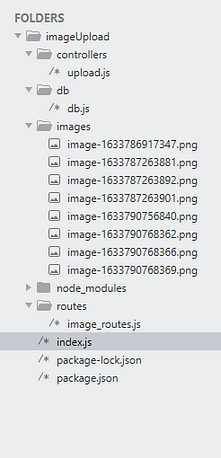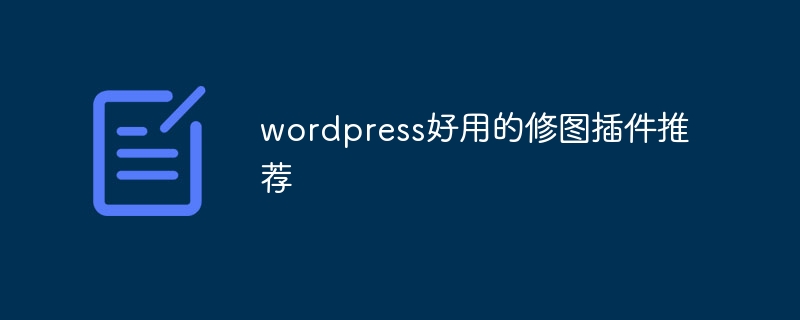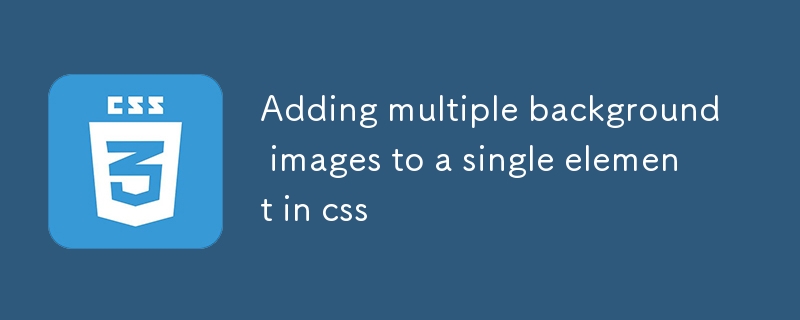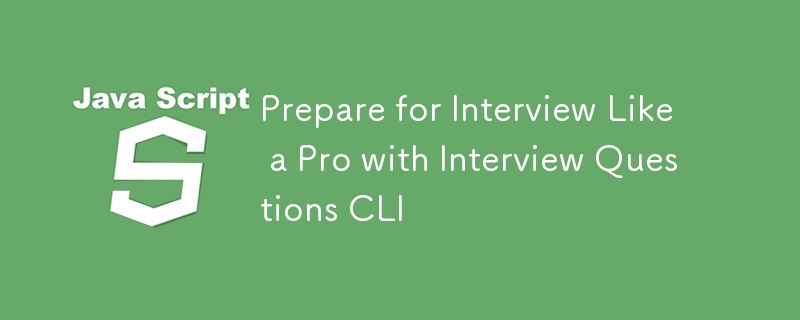Found a total of 10000 related content

How to build NodeJS Express REST API to Upload Image using Multer(PostgreSQL)
Article Introduction:Build a powerful image upload API: using Node.js, Multer and PostgreSQL
This article will guide you on how to use Node.js, Multer and PostgreSQL to build a simple and easy-to-use API to upload single and multiple images. Image uploading and database storage can be easily completed without complicated configuration.
Prerequisites:
Node.js and PostgreSQL are installed and configured.
Familiar with basic operations of Node.js and PostgreSQL.
Postman is used for API testing.
Project settings:
Create a project directory and initialize it:
2025-01-25
comment 0
820

Recommended easy-to-use photo editing plug-in for wordpress
Article Introduction:The easy-to-use photo editing plug-ins on WordPress are: Imagify Image Optimizer: a powerful image compression artifact that supports multiple compression levels, and the free version has a compression limit. Smush Image Compression and Optimization: High integration, easy to operate, and the free version has good compression effect. ShortPixel Image Optimizer: A high-level plug-in that not only compresses images, but also provides image processing functions, with high compression rate but expensive price. WP Smush Pro: The paid version of Smush is more powerful, faster, supports batch processing, and is more expensive than the free version.
2025-04-20
comment 0
988

Adding multiple background images to a single element in css
Article Introduction:To add multiple background images to web page elements, CSS supports comma-separated implementation. The specific methods are: 1. Use commas to separate multiple image paths in the background-image attribute, such as url('top-pattern.png'), url('main-bg.jpg'); 2. Pay attention to the order, and the first image is displayed on the top layer; 3. You can set the display method of each image with background-repeat, background-position and other attributes, and keep the order one by one; 4. Common combinations include controlling repetition, position, size and mixing mode; 5. Pay attention to compatibility when using (not supported by IE8 and earlier versions), and
2025-07-10
comment 0
883

What's New in HTML 5.1
Article Introduction:HTML5.1: A new era of web development
Explore the creative animation production of HTML5 and watch our screen recording tutorial “Create animations with HTML5 Canvas”.
Core points
HTML 5.1, as the latest version of HTML, introduces many new features and improvements, including creating context menus using menu and menuitems elements, creating collapsible content using details and summary elements, and three new form input types: month, week, and datetime -local.
This version also includes the ability to implement responsive images without CSS, such as: the srcset image attribute is used to list multiple alternative image sources;
2025-02-19
comment 0
405

What are the requirements for publishing product pictures on Xiaohongshu? How to set the product shelf size?
Article Introduction:To successfully publish products on the Xiaohongshu platform, image quality and size information are crucial. This article will explain in detail Xiaohongshu product image specifications and product size setting techniques to help you increase product exposure and conversion rate. 1. Xiaohongshu product image specifications In order to ensure the clarity and authenticity of product images, Xiaohongshu has the following requirements for product images: High-definition and true: The images must clearly and truly reflect the appearance and color of the product, avoiding blur and distortion. Size ratio: It is recommended to use a 1:1 square image with a minimum side length of no less than 480 pixels to facilitate better display on the user's homepage. Quantity limit: You can upload up to 9 pictures for each product. It is recommended to display it from multiple angles, including front, side, back and detailed close-ups. Pure content: Pictures
2025-01-16
comment 0
705

How to use the picture element for responsive images?
Article Introduction:Using elements allows better handling of responsive images, which enables the loading of the most appropriate images based on screen size, resolution and format through multiple and one implementation. Specifically, it includes: 1. Different cropped images under different screen sizes; 2. Supports modern formats such as WebP or AVIF; 3. High-definition pictures of high-resolution devices. Structurally, you need to use the definition conditions and image sources in turn, and use them as fallback schemes. At the same time, you should always include, use srcset instead of src, and specify the format through type to ensure compatibility. In addition, breakpoints should be set reasonably, pictures should be optimized, and valid alt text should be retained. In simple scenarios, only imgsrcset can be used to implement responsiveness.
2025-07-13
comment 0
687

Exploring Different Input Types for HTML Forms
Article Introduction:The input type improves form experience and verification efficiency. HTML5 provides various input types such as text, password, email, etc., which are adapted to different scenarios such as username, password hiding, and email verification; supports number limited number input, date selection, checkbox multiple selection, radio single selection, file upload, range slider bar, color color selection; combines required, min/max, and pattern to achieve front-end verification to reduce the burden on the back-end; mobile terminals automatically adapt to keyboard types such as email display @ symbols, tel calls numeric keyboards; provide input-able option list, readonly lock fields, hidden through datalist
2025-07-06
comment 0
569

How to implement the Proxy design pattern in Java?
Article Introduction:To implement the proxy design pattern in Java, you first need to define a common interface, then implement the real topic class, then create a proxy class to control access to real objects, and finally use the proxy in the main program. 1. Define the public interface Image to ensure that the proxy and real objects are interchangeable; 2. Implement the RealImage class to be responsible for the loading and display of actual images; 3. Create the ImageProxy class to implement lazy loading in its display method; 4. Use ImageProxy in the Main class to delay loading image resources and improve efficiency. This mode supports multiple uses such as security control, logging, or remote calls.
2025-07-13
comment 0
946

Implementing Responsive Images with the HTML5 Picture Element
Article Introduction:Elements are container elements introduced by HTML5 for implementing responsive pictures, which select the most suitable image resource according to device characteristics through multiple and one tag. 1. It supports loading adaptive pictures according to different screen widths to improve loading performance; 2. It can provide priority to modern formats such as WebP, which will fall back to traditional formats if not supported; 3. It can switch different compositions according to the aspect ratio of the device to optimize visual display; in addition, it is always necessary to add descriptive alt text, ensure correct paths, test compatibility and standardized naming to improve maintainability.
2025-07-14
comment 0
527

Implementing Responsive Images using HTML Picture Element
Article Introduction:Elements are a native way to implement responsive images in HTML5. It allows the most appropriate image resources to be loaded according to factors such as the screen size, resolution, and direction of the device. Define multiple image sources and their corresponding media query conditions through tags. The browser will match and load pictures that meet the conditions in order, and finally use the tag as the default fallback. For example: when the device width is greater than or equal to 1024px, medium.jpg is loaded between 768 and 1023px, small.jpg is loaded if the device width is greater than or equal to 1024px. Compared with srcset, it provides more refined control capabilities, such as adapting to Retina screens, horizontal and vertical screen switching, completely different picture content, etc. Media checks should be set reasonably when using
2025-07-10
comment 0
451

Implementing Native Lazy Loading for HTML5 Images and Iframes
Article Introduction:How to implement lazy loading of images and iframes in HTML5? By adding loading="lazy" attribute to the and tags, the browser delays loading these elements until they are about to enter the viewport. Applicable scenarios include non-first-screen content at the bottom of the page, gallery or product pages with a large number of pictures, content skipped by mobile terminals in responsive design, and pages with multiple iframes embedded. It is not recommended to use lazy loading for key content on the home screen such as logo or banner. Notes include: 1. When it is compatible with old browsers, you must introduce polyfill; 2. Ensure that the search engine can recognize the image content to avoid SEO influence; 3. Set placeholders to prevent layout jitter; 4. Dynamically inserted pictures need to be manually processed and lazy loaded.
2025-07-07
comment 0
409


Dave The Diver: How To Catch Spider Crabs
Article Introduction:In Dave The Diver, there are some creatures that are not easy to catch. Or, catch alive that is. The spider crab is one of those very species, making it seem like the only way to bring these crustaceans back up to land is to viciously crack them up w
2025-01-10
comment 0
817

Prepare for Interview Like a Pro with Interview Questions CLI
Article Introduction:Prepare for Interview Like a Pro with Interview Questions CLI
What is the Interview Questions CLI?
The Interview Questions CLI is a command-line tool designed for JavaScript learners and developers who want to enhance their interview
2025-01-10
comment 0
1442

Soft Deletes in Databases: To Use or Not to Use?
Article Introduction:Soft Deletes: A Question of DesignThe topic of soft deletes, a mechanism that "flags" records as deleted instead of physically removing them, has...
2025-01-10
comment 0
1054



















